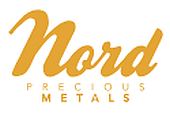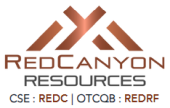Graphano Energy
THE POWER OF CARBON
Graphano Energy Ltd. is a mining company that is focused on evaluating, acquiring and developing graphite resources with potential—from exploration to production.
Graphite is one of the most in-demand technology minerals that is required for a green and sustainable world. Graphite Energy Corp. has state-of-the-art, environmentally friendly mining technology. Our property, located in Quebec, Canada, has historically been a natural resource for graphite. With the demand for graphite growing in some of the most prominent and cutting edge industries, such as lithium batteries in electric cars and robotics, we have updated our technology to meet the demands of the future.
WHAT IS GRAPHITE?
Natural graphite is a mineral composed of graphitic carbon (Cg); it is mostly obtained from primary sources, i.e., from mining. Natural graphite should not be confused with synthetic graphite that is produced from calcined petroleum coke and coal tar pitch that have lower crystallinity.
Natural graphite is classified as:
- Crystalline vein graphite
- Microcrystalline (amorphous) graphite
- Flake graphite
TYPES OF GRAPHITE
Flake Graphite
Flake graphite can be found in metamorphic rocks and have a flake or flat particle form of various sizes. It is usually characterised as fine (-100 to +200 mesh), medium (-80 to +100 mesh), large (-48 to +80) or jumbo (+48 mesh) and can contain up to 90-97% carbon. Carbon concentration in flake graphite deposits ranges from about 2% to 40% Cg. After mining, flake graphite ore is usually beneficiated via froth flotation to extract flake graphite. The result is a concentrate with 80%–90% graphite content.
Microcrystalline Graphite
Microcrystalline graphite, also referred to as “amorphous”, is the least graphitic among the natural graphites. Amorphous graphite can be found as tiny particles (-200 mesh, or <75 microns) in metamorphic anthracite or in carbonaceous coal beds. The graphite content varies from 25% to 85% according to the geological environment.
Highly Crystalline Graphite
This type of graphite may be referred to as “vein” or “lump” graphite. It usually occurs as veins or filled fissures in igneous and crystalline metamorphic rocks. The only commercial deposits are in Sri Lanka, where veins are said to be up to 3 metres thick and mined at depths of 30 to 650 m. The ore is mined by hand by artisanal miners, resulting in a high-grade product with more than 90% graphitic carbon.
APPLICATIONS
Natural graphite is a refractory material with a high melting point of 3650 °C, and it is a good conductor of heat and electricity. Some of the applications for graphite include: batteries, lubricants, refractories, coatings and paint, metallurgy and moderator rods in nuclear power plants, among other applications.


















